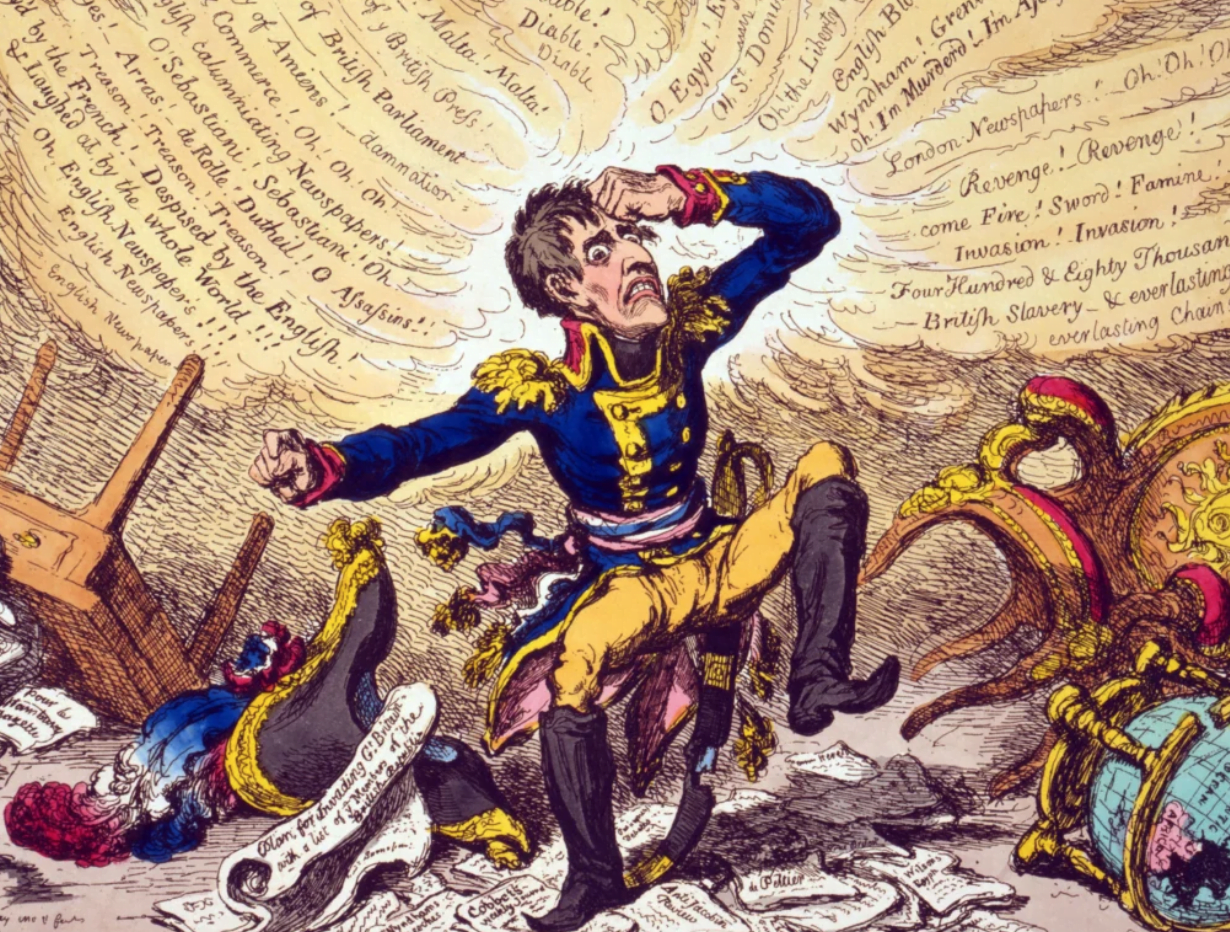Napoleon I Bonaparte's short stature has become as much a part of his pop culture image as his cocked hat or his one-armed pose inside his uniform. We found out whether the French emperor was really short.
In the novel War and Peace, Leo Tolstoy repeatedly describes Napoleon with the words “a little man in a gray frock coat.” Some sources writethat Napoleon was 157 cm tall, that corresponds height of the figure of the emperor in the exhibitions of various wax museums. The stereotype about his short stature is so ingrained in the mass consciousness that the concept even arose in psychology "Napoleon complex" to describe an inferiority complex in which a person compensates for his short stature with an aggressive behavior and desire for power.
Napoleon's height at 5 feet 2 inches and 4 lines was recorded after his death by his personal physician, François Carlo Antommarchi. Converting English feet to metric would result in 157 cm. The error was that before introduction in France, the metric system feet and inches were not English, but French. It is in French inches that the French doctor indicated Napoleon's height, which is actually 169 cm (french foot = 32.48 cm). Moreover, by the time of his death at 51, after a long illness, the vertebrae could have become compressed. So it's quite reasonable assumethat in his youth Napoleon could have been even taller than 170 centimeters.

Even by today's standards, such a man cannot be called short, and considering that since the 19th century the average male height increased by about 11 cm, then in those days Napoleon was taller than two-thirds of his soldiers and most of his fellow citizens. For comparison, we can also recall that Churchill and Pushkin were 3 cm shorter than Napoleon, Stalin was 7 cm shorter, Napoleon’s main opponent at sea, Admiral Nelson, was 10 cm shorter, but they were not considered short.
So where did the legend come from? An error in converting values is clearly not the only reason for the misconception about Napoleon’s short stature, because this myth appeared during his lifetime. Perhaps the emperor looked short surrounded by his grenadier guards, whose height, according to selection criteria, was at least 178 cm. Among Napoleon’s associates there were also extremely tall people. For example, the height of Marshal Murat amounted to 190 cm, Marshal Mortier - 195 cm, and Brigadier General Suam was already 198 cm tall. Naturally, against their background, Napoleon seemed short.
Another reason could be the Parisian fashion for tall hats. Napoleon dressed their marshals and adjutants in hats with gold embroidery and feathers, which visually increased their height. Himself preferred wear the famous cocked hat, from which he tore off the uniform gold embroidery, leaving only the tricolor French cockade. Also physique Napoleon - with his disproportionately large head - could visually reduce his height.

Nickname like "little corporal", which Napoleon received from his soldiers, commanding troops in Italy, contributed to the downplaying of his growth in the minds of his contemporaries. Although the word “small” in this case indicated the age of the 26-year-old general rather than his body size, Bonaparte’s opponents used derogatory names such as "little corporal", "boy" and "upstart youth" for political purposes.
The propaganda of Napoleon's opponents began with the work of a British cartoonist James Gillray. The image of Bonaparte became an important cross-cutting motif in the artist’s string of caricature characters. One of his works about the French emperor so far think perhaps the most famous political cartoon of all time: “Pudding in Danger, or Epicureans at Dinner” from 1805. In it, British Prime Minister Pitt and Napoleon divide the world: England cuts off the world's oceans for itself, and France cuts off Europe.

Gillray's depiction of Napoleon as a short man was so popular that it was picked up by other cartoonists. For example, Russian graphic artist Ivan Terebenev and British illustrator George Cruikshank created many drawings ridiculing the short "Bonya".
On anonymous caricature 1811 "Visions of Bonnie, or the Night Consolations of the Great Little Man" depicts Napoleon's night terrors, among which are caricatures by Gillray (in the lower left corner, the inscription on the poster in the hands of a demon).

Gillray's drawings were so offensive that Napoleon more than once promised to hang the artist, and at the end of his life, it seems, even stated: “Gillray did more for my defeat than all the armies of Europe.”
Thus, the political satire of his contemporaries rooted in the mass consciousness the image of Napoleon as an imperious short man, probably playing an even greater role than the error in the interpretation of the posthumous measurement of his height.
Legend
Read on topic:
- Is it true that the nose of the Great Sphinx was broken off by order of Napoleon?
- Did Napoleon say: “A people who do not want to feed their army will soon feed someone else’s”?
- Is it true that in France it is illegal to call a pig Napoleon?
- History. Was Napoleon Short? Origins of the 'Napoleon Complex'
- The British Museum: Ivan Terebenev
- The British Museum: Catalog of political satire
If you find a spelling or grammatical error, please let us know by highlighting the error text and clicking Ctrl+Enter.







